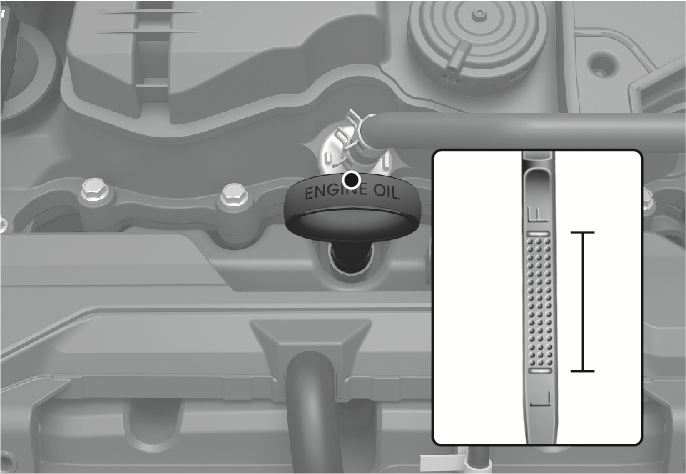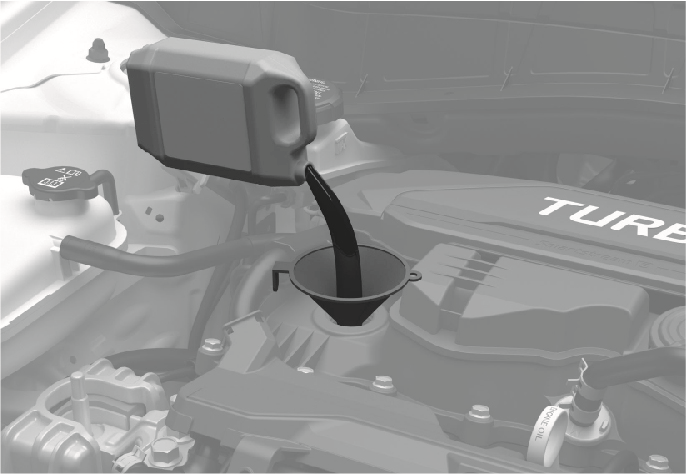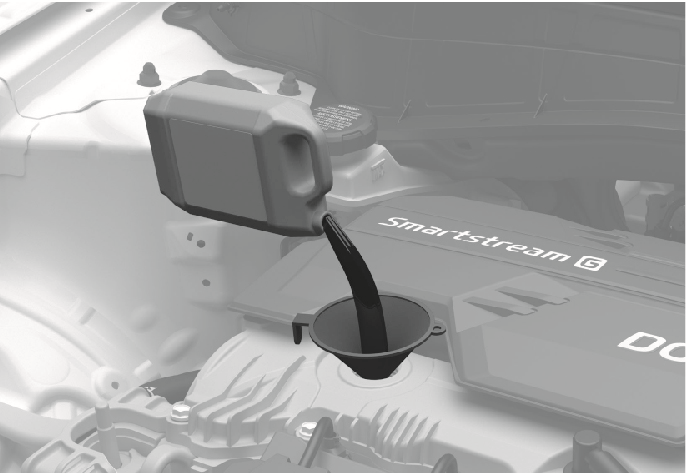Checking the engine oil level
Engine oil is used for lubricating, cooling, and operating various hydraulic components in the engine. Engine oil consumption whilst driving is normal, and it is necessary to check and refill the engine oil regularly. Also, check and refill the oil level within the recommended maintenance schedule to prevent deterioration of oil performance.
Check the engine oil following the below procedure.
-
Follow all of the oil manufacturer’s precautions.
-
Be sure the vehicle is on the level ground in P (Park) with the parking brake set and the wheels blocked.
-
Turn the engine on and warm the engine up until the coolant temperature reaches a constant normal temperature.
-
Turn the engine off, remove the oil filler cap and pull the dipstick out. Wait for 15 minutes for the oil to return to the oil pan.
-
Wipe the dipstick clean and re-insert it fully.
-
Pull the dipstick out again and check the level. The level should be between F (Full) and L (Low).
Smartstream G1.6 T-GDI
2C_EngineOilGaugeGasoline-1
Smartstream G2.0 ATKINSON
2C_EngineOilGaugeGasoline-2
-
If the oil level is below L, add enough oil to bring the level to F.
Smartstream G1.6 T-GDI
2C_EngineOilGaugeGasoline_2
Smartstream G2.0 ATKINSON
2C_EngineOilGaugeGasoline_4
Use only the specified engine oil (Refer to the “Recommended lubricants and capacities” section in chapter 2).
Be very careful not to touch the radiator hose when checking or adding the engine oil as it may be hot enough to burn you.
To prevent damage to your engine:
-
Do not spill engine oil when adding or changing engine oil. Wipe off spilled oil immediately.
-
The engine oil consumption may increase whilst you break in a new vehicle and it will be stabilized after driving 6,000 km.
-
The engine oil consumption can be affected by driving habits, climate conditions, traffic conditions, oil quality, etc. Therefore, it is recommended that you inspect the engine oil level regularly and refill it if necessary.